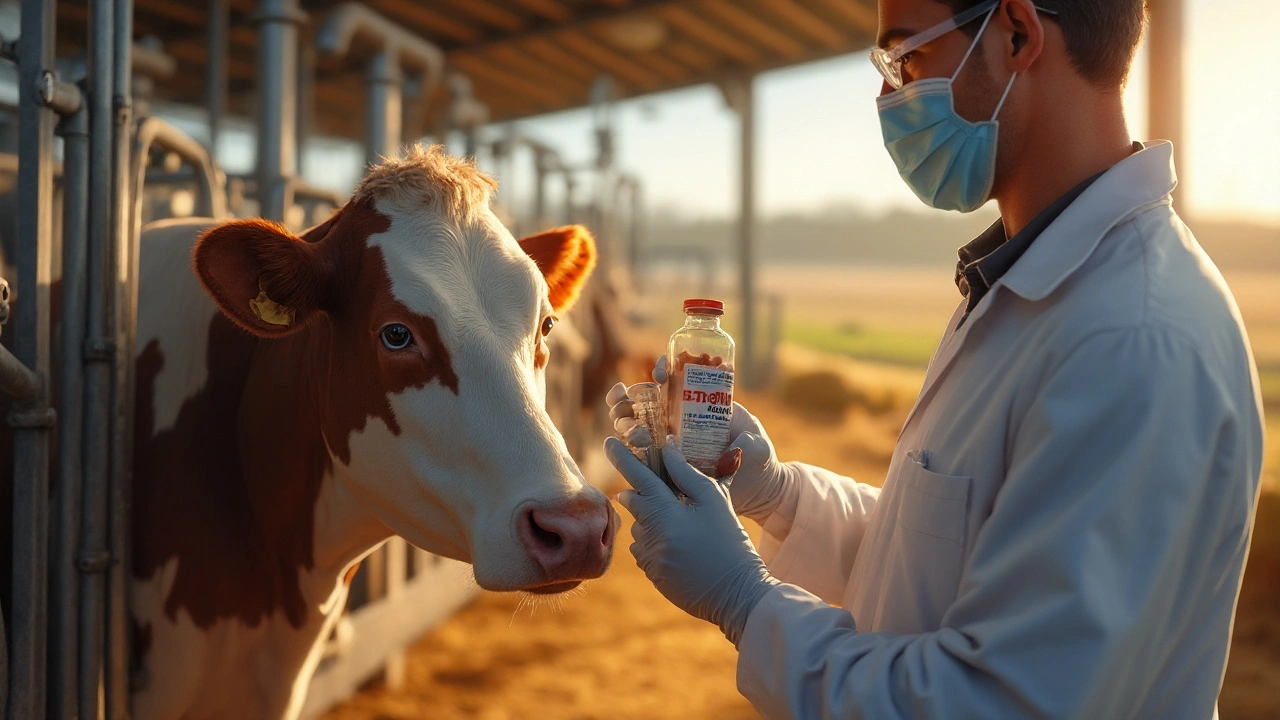
Benemid Explained: Uses, Dosage & Safety Tips for Livestock (2025)
A 2025 guide on Benemid - what it is, how to use it on cattle, sheep and goats, safe dosages, withdrawal periods and common FAQs.
21 Sep 2025Giving the right amount of medicine to a dog, cat, horse, or cow can feel like a guessing game. In reality, it’s just math and a few safety checks. This guide walks you through the exact steps you need to take so you can dose confidently, whether you’re a vet, a tech, or a pet owner.
The core formula is the same for every species: Desired Dose (mg) = Animal Weight (kg) × Dose per kg (mg/kg). Start by finding the drug’s recommended mg/kg on the label or in a trusted reference. Then weigh the animal – a digital scale works best for small pets, while a weight tape is fine for larger animals. Multiply the two numbers, and you have the exact milligram amount you need.
If the medication comes as a liquid, you’ll also need to know the concentration (mg per mL). Divide the milligram dose by the concentration to get the volume to give. For example, a 10 kg dog needs 5 mg/kg of drug X that’s 20 mg/mL. That’s (10 kg × 5 mg/kg) ÷ 20 mg/mL = 2.5 mL.
Never rely on memory alone. Write the calculated dose on a sticky note and double‑check against the drug’s label. Look for warnings about species‑specific toxicity – many human medicines are lethal to cats but safe for dogs. Make sure the animal isn’t on another drug that could interact; a quick glance at a drug‑interaction chart can save a lot of trouble.
When you’re ready to give the dose, use the proper delivery device. Oral syringes give precise volumes for liquids, while calibrated tablets can be split with a pill cutter. If you’re dosing a large animal, an oral drench gun ensures the medication reaches the stomach and not just the mouth.
After administration, observe the animal for a few minutes. Watch for signs of gagging, vomiting, or unusual behavior. If anything looks off, contact a vet immediately – early action prevents bigger problems.
In practice, the hardest part is remembering to re‑calculate each time the animal’s weight changes. Puppies, foals, and growing livestock gain weight fast, so schedule a re‑weigh every two weeks for young animals. For adult pets that stay the same weight, an annual check is enough.
Finally, keep a log. Write down the drug name, dose, date, time, and any reactions. Over time this record helps you spot trends and makes future dosing easier. It also gives your vet a clear picture if a problem arises.
With these straightforward steps – weight, formula, concentration, safety check, and documentation – you’ll dose pets and livestock accurately every time. No more scary guesswork, just clear, repeatable practice that keeps animals healthy and owners confident.

A 2025 guide on Benemid - what it is, how to use it on cattle, sheep and goats, safe dosages, withdrawal periods and common FAQs.
21 Sep 2025